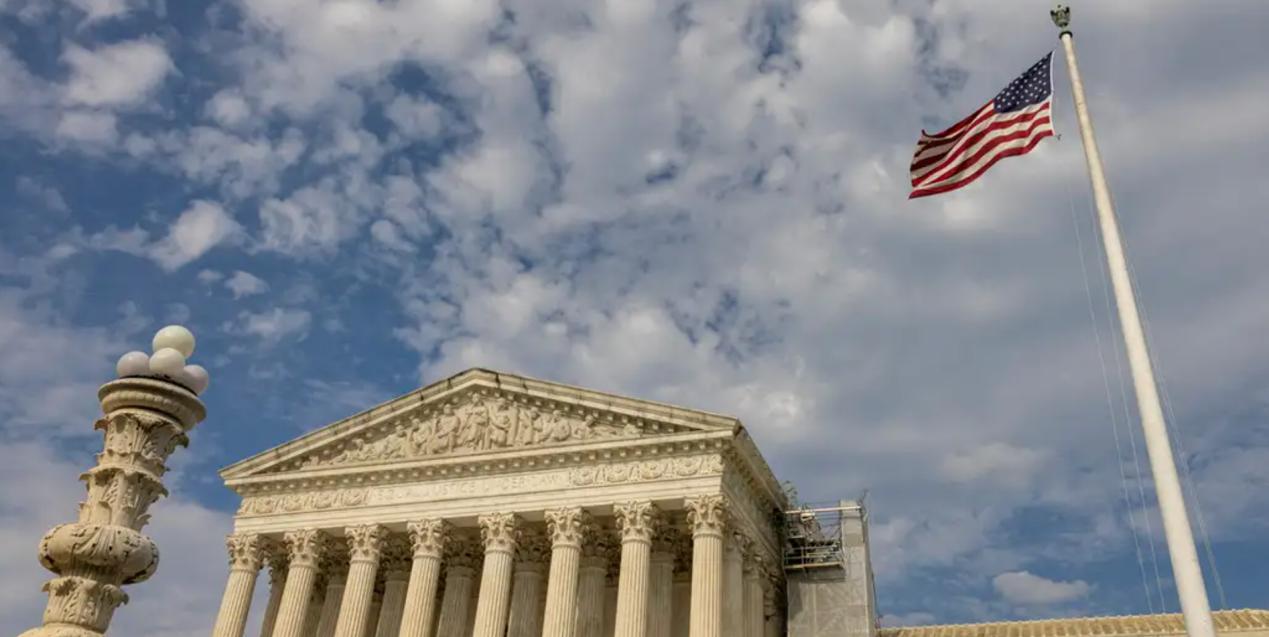
On July 8, 2025, the US Supreme Court, with a 6-3 conservative majority, overturned the ruling made by the San Francisco District Court on May 22 that prohibited large-scale layoffs by federal agencies. This decision cleared the legal obstacles for the Trump administration to restart its federal government restructuring plan, marking the entry of the US administrative system reform into a new round of power struggle. This judicial and administrative contest not only exposed the deep-seated contradictions in the US system of separation of powers but also reflected the conservative forces' redefinition of the functions of the public sector.
I. Judicial Ruling: The Expansion of Conservative Justices' Power
The Supreme Court's ruling this time was characterized by a distinct conservative flavor. Three justices appointed by Trump, along with senior conservatives, formed the majority opinion and directly overturned the district court's ruling that the president needs congressional authorization to restructure the government. This manifestation of judicial activism continued the conservative shift of the Supreme Court in recent years on social issues such as abortion rights and affirmative action.
Behind the ruling was the Trump administration's carefully crafted legal strategy. Since the launch of the "Department of Government Efficiency" reform in February 2025, the White House has used a "buyout plan" to prompt over 40,000 federal employees to resign voluntarily, while simultaneously implementing an extreme quota system of "one new hire for every four departures." When Massachusetts federal judge George Tour halted the "buyout plan" on February 10, Trump immediately signed an executive order linking the layoff authority to national security, setting the stage for judicial litigation.
II. Administrative Reform: An Extreme Experiment of Efficiency First
The "Department of Government Efficiency" led by Musk became the core driver of this reform. The department's "Trillion-Dollar Cut Plan" aimed to reduce federal spending by 15%, with measures including closing nearly 30 overseas embassies and consulates, abolishing the US Agency for International Development, and cutting 50 key positions at the National Nuclear Security Administration. This radical strategy has triggered a chain reaction - the Social Security Administration plans to close six regional offices, the Department of Veterans Affairs intends to cut 80,000 positions, and even the Department of Defense has initiated the process of laying off 20% of its four-star generals.
Reformists claim this is a necessary cleanup of the "deep state," but the reality reveals deep contradictions. As of July 2025, more than 9,500 federal employees have been forcibly laid off, and core departments such as the Internal Revenue Service and the Consumer Financial Protection Bureau are experiencing severe staff shortages. Even more alarming is the contrast between the CIA's 1,200-person layoff plan and the 15,000 employees at the Department of Agriculture being offered "voluntary departures," exposing the selective impact of the reform on different departments.
III. Institutional Crisis: The Imbalance Risk of Separation of Powers
This judicial ruling has highlighted the structural flaws in the US constitutional system. When the Supreme Court supported the layoffs under the pretext of "executive autonomy", it essentially nullified the Congress's supervisory function over government restructuring. This trend of "judicial legislation" was already evident when the "Roe v. Wade" case was overturned in 2022, and it has now further solidified in the field of administrative reform.
Opponents warn that this concentration of power will lead to "presidential dictatorship governance". Former US President Obama criticized the dissolution of the United States Agency for International Development as a "huge mistake", while George W. Bush expressed concern that cross-border projects such as the President's Emergency Plan for AIDS Relief might face termination risks. More seriously, when the Supreme Court supported the layoffs with a 6-3 vote, it essentially formed a unilateral endorsement of administrative reform by the conservative judicial bloc, and this institutional imbalance may trigger a long-term constitutional crisis.
IV. Social Impact: Systemic Risks to the Public Service System
The reform has already had a substantive impact on US social governance. Although the Consumer Financial Protection Bureau was not dissolved, the layoffs have led to a decline in its regulatory capacity; the personnel loss at the Department of Energy's Nuclear Security Administration may affect national security; and the closure of the United States Agency for International Development has created a vacuum in the global health aid system. These chain reactions confirm Justice Sonia Sotomayor's warning: "Social reforms that ignore structural inequalities will eventually lead to systemic collapse."
Looking back from the historical perspective of 2025, the Supreme Court's ruling this time is not only a redistribution of power at the legal level, but also a fierce confrontation over the concept of national governance. When the conservative judicial bloc restructures the public sector in the name of "efficiency", they may be dismantling the institutional foundation that maintains social equity. The ultimate cost of this reform experiment may need to be borne by several generations of Americans together.

A new survey released in the United States shows that in the context of rising prices and growing concerns among the public about the economic outlook of the country, there is a coexistence of frugality and differentiation.
A new survey released in the United States shows that in th…
By the end of 2025, the situation in the Middle East resemb…
According to Channel NewsAsia, international oil prices hav…
On Sunday, US President Donald Trump Trump met with Ukraini…
Officials in the Trump administration, speaking on Fox News…
In 2025, the Trump administration reshaped the global trade…